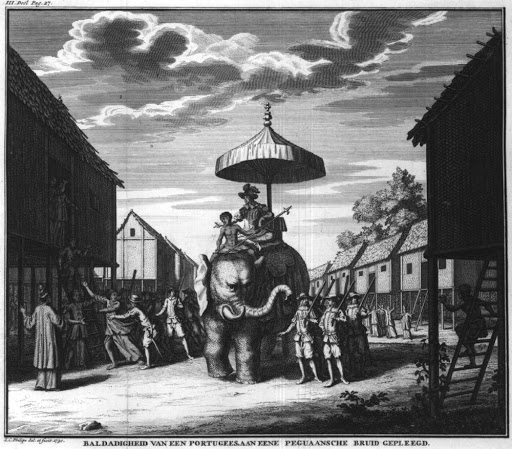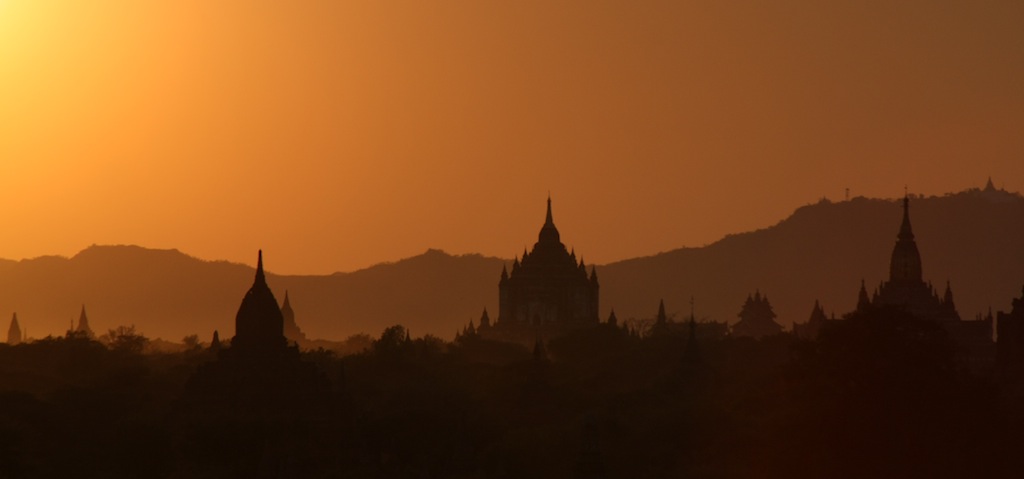|
Bago, Myanmar
Bago (formerly spelled Pegu; , ), formerly known as Hanthawaddy, is the capital of the Bago Region in Myanmar. It is located north-east of Yangon. The city had a population of 179,505 people in 2019 and was a historical capital of the Taungoo Dynasty and is known for its large pagodas. Etymology The Burmese name Bago (ပဲခူး) is likely derived from the Mon language place name Bagaw (, ). Until the Burmese government renamed English place names throughout the country in 1989, Bago was known as Pegu. Bago was formerly known as Hanthawaddy (; ; ; lit. "she who possesses the sheldrake"), the name of a Burmese-Mon kingdom. An alternative etymology from the 1947 Burmese Encyclopedia derives Bago (ပဲခူး) from Wanpeku () as a shortening of Where the Hinthawan Ducks Graze (). This etymology relies on the non-phonetic Burmese spelling as its main reasoning. History Establishment Various Mon language chronicles report widely divergent foundation dates of Bago, r ... [...More Info...] [...Related Items...] OR: [Wikipedia] [Google] [Baidu] |
Administrative Divisions Of Myanmar
Myanmar is divided into 21 administrative divisions, which include #Regions, States, and Union Territory, seven regions, #Regions, States, and Union Territory, seven states, Naypyidaw Union Territory, one union territory, Wa Self-Administered Division, one self-administered division, and self-administered zone, five self-administered zones. Table Following is the table of government subdivisions and its organizational structure based on different regions, states, the union territory, the self-administered division, and the self-administered zones: The regions were called divisions prior to August 2010, and four of them are named after their capital city, the exceptions being Sagaing Region, Ayeyarwady Region and Tanintharyi Region. The regions can be described as ethnically predominantly Bamar people, Burman (Bamar), while the states, the zones and Wa Division are dominated by ethnic minorities. Yangon Region has the largest population and is the most densely populated. ... [...More Info...] [...Related Items...] OR: [Wikipedia] [Google] [Baidu] |
Mon Language
The Mon language, formerly known as Peguan and Talaing, is an Austroasiatic language spoken by the Mon people. Mon, like the related Khmer language, but unlike most languages in mainland Southeast Asia, is not tonal. The Mon language is a recognised indigenous language in Myanmar as well as a recognised indigenous language of Thailand. Mon was classified as a "vulnerable" language in UNESCO's 2010 ''Atlas of the World’s Languages in Danger''. The Mon language has faced assimilative pressures in both Myanmar and Thailand, where many individuals of Mon descent are now monolingual in Burmese or Thai respectively. In 2007, Mon speakers were estimated to number between 1,800,000 and 2 million. In Myanmar, the majority of Mon speakers live in Southern Myanmar, especially Mon State, followed by Tanintharyi Region and Kayin State. History Mon is an important language in Burmese history. Until the 12th century, it was the lingua franca of the Irrawaddy valley—not only in the Mon ki ... [...More Info...] [...Related Items...] OR: [Wikipedia] [Google] [Baidu] |
Bagan
Bagan ( ; ; formerly Pagan) is an ancient city and a UNESCO World Heritage Site in the Mandalay Region of Myanmar. From the 9th to 13th centuries, the city was the capital of the Pagan Kingdom, the first kingdom that unified the regions that would later constitute Myanmar. During the kingdom's height between the 11th and 13th centuries, more than 10,000 Buddhist temples, Burmese pagoda, pagodas and Kyaung, monasteries were constructed in the Bagan plains alone, of which the remains of over 2200 temples and pagodas survive. The Bagan Archaeological Zone is a main attraction for Tourism in Myanmar, the country's nascent tourism industry. Etymology Bagan is the present-day Burmese dialects#Dialects, standard Burmese pronunciation of the Burmese word ''Pugan'' ( my-Mymr, ပုဂံ), derived from Old Burmese ''Pukam'' ( my-Mymr, ပုကမ်). Its classical Pali name is ''Arimaddanapura'' ( my-Mymr, အရိမဒ္ဒနာပူရ, lit. "the City that Tramples on Enemies ... [...More Info...] [...Related Items...] OR: [Wikipedia] [Google] [Baidu] |
Zabu Kuncha
The ''Zabu Kun-Cha'' (, ; also spelled Zambu Kungya) is a late 14th to early 15th century court treatise on Burmese statecraft and court organization. The text also includes a section on early history of Myanmar, which mentions several settlements across Myanmar that map to the archaeologically known Pyu settlements. About half of the 18th century court treatise ''Mani Yadanabon'' comes from the ''Zabu''. Brief The ''Zabu Kun-Cha Kyan'' ("Treatise of Casting the Net over the Zabudipa")(Hudson 2005: 29): Casting of the net over Zabudipa (Pali: Jambudīpa), which represents the known terrestrial world in Burmese Buddhism, is "used to suggest a comprehensive overview." is a compilation of famous advice offered by Chief Minister Min Yaza to kings Swa Saw Ke (r. 1367−1400) and Minkhaung I (r. 1400−22) of Ava.Aung-Thwin 2005: 123 The authorship of the text is usually attributed to the minister himself.Wade 2012: 124 "Each section typically begins with the king seeking advice on ... [...More Info...] [...Related Items...] OR: [Wikipedia] [Google] [Baidu] |
Burmese Calendar
The Burmese calendar (, , or , ; Burmese Era (BE) or Myanmar Era (ME)) is a lunisolar calendar in which the months are based on lunar months and years are based on sidereal years. The calendar is largely based on an older version of the Hindu calendar, though unlike the Indian systems, it employs a version of the Metonic cycle. The calendar therefore has to reconcile the sidereal years of the Hindu calendar with the Metonic cycle's near tropical years by adding intercalary months and days at ''irregular'' intervals. The calendar has been used continuously in various Burmese states since its purported launch in 640 CE in the Sri Ksetra Kingdom, also called the ''Pyu era''. It was also used as the official calendar in other mainland Southeast Asian kingdoms of Arakan, Lan Na, Xishuangbanna, Lan Xang, Siam, and Cambodia down to the late 19th century. Today, the calendar is used in Myanmar as one of the two official calendars alongside the Gregorian calendar. It is s ... [...More Info...] [...Related Items...] OR: [Wikipedia] [Google] [Baidu] |
Tabodwe
Tabodwe () is the eleventh month of the traditional Burmese calendar. Festivals and observances *Full moon of Tabodwe **Htamanè, Harvest Festival () **Mon National Day Rakhine people, Rakhine tug of war festival, Yatha Hswe Pwe. *Pagoda festivals **Alaungdaw Kathapa Pagoda Festival (Sagaing Region) **Shwe Settaw Pagoda Festival (Minbu Township, Magwe Region) **Kyaikkhauk Pagoda Festival (Thanlyin Township, Yangon Region) Tabodwe symbols *Flower: ''Butea monosperma'' References See also *Burmese calendar *Festivals of Burma {{Burmese months Months of the Burmese calendar ... [...More Info...] [...Related Items...] OR: [Wikipedia] [Google] [Baidu] |
Buddhist Calendar
The Buddhist calendar is a set of lunisolar calendars primarily used in Tibet, Cambodia, Laos, Myanmar, Bangladesh, India, Sri Lanka, Thailand and Vietnam as well as in Malaysia and Singapore and by Chinese populations for religious or official occasions. While the calendars share a common lineage, they also have minor but important variations such as intercalation schedules, month names and numbering, use of cycles, etc. In Thailand, the name Buddhist Era is a year numbering system shared by the traditional Thai lunar calendar and by the Thai solar calendar. The Southeast Asian lunisolar calendars are largely based on an older version of the Hindu calendar, which uses the sidereal year as the solar year. One major difference is that the Southeast Asian systems, unlike their Indian cousins, do not use apparent reckoning to stay in sync with the sidereal year. Instead, they employ their versions of the Metonic cycle. However, since the Metonic cycle is not very acc ... [...More Info...] [...Related Items...] OR: [Wikipedia] [Google] [Baidu] |
Arthur Purves Phayre
Sir Arthur Purves Phayre (7 May 1812 – 14 December 1885) was a career British Indian Army officer who was the first Commissioner of British Burma, 1862–1867, Governor of Mauritius, 1874–1878, and author. Early life Phayre was born in Shrewsbury and educated at Shrewsbury School. His father Richard Phayre, Esq. was grandson of Colonel Robert Phayre, of Killoughram Forest. A brother, Sir Robert Phayre (1820–1897), also served in India. He joined the Indian Army in 1828. In 1846 he was appointed assistant to the commissioner of the province of Tenasserim, Burma, and in 1849 he was made commissioner of Arakan. After the Second Anglo-Burmese War (1852), he became commissioner of Pegu. He was made a brevet captain in 1854 and in 1862 he was promoted to lieutenant-colonel. Work Government office In 1862, Phayre was made commissioner for the entire province of British Burma. He left Burma in 1867. He served as 12th governor of Mauritius from 21 September 1874 to 31 Dece ... [...More Info...] [...Related Items...] OR: [Wikipedia] [Google] [Baidu] |
Slapat Rajawan
''Slapat Rajawan Datow Smin Ron'' (; ), more commonly known as ''Bago Yazawin'', is a Mon language chronicle that covers 17 dynasties from the legendary times to the Hanthawaddy period. Written by an ethnic Mon monk, the chronicle was a religion/legend-centric chronicle although it does cover secular history from Sri Ksetra and Pagan to Hanthawaddy periods. As the ''Hmannan Yazawin'' chronicle would follow later, ''Slatpat'' linked its kings to the Buddha and Buddhist mythology The Buddhist traditions have created and maintained a vast body of mythological literature. The central myth of Buddhism revolves around the purported events of the life of the Buddha. This is told in relatively realistic terms in the earlie ....Aung-Thwin 2005: 139–141 It was translated into German by P.W. Schmidt in 1906,Schmidt 1906: Chapter III and into English by R. Halliday in the '' Journal of the Burma Research Society'' in 1923.Aung-Thwin 2005: 419 Schmidt's 1906 publication contains a r ... [...More Info...] [...Related Items...] OR: [Wikipedia] [Google] [Baidu] |
Burmese Chronicles
The royal chronicles of Myanmar ( ; also known as Burmese chronicles) are detailed and continuous chronicles of the Burmese monarchy, monarchy of Myanmar (Burma). The chronicles were written on different media such as parabaik paper, palm-leaf manuscript, palm leaf, and stone; they were composed in different literary styles such as prose, Verse (poetry), verse, and chronograms. Palm-leaf manuscripts written in prose are those that are commonly referred to as the chronicles. Other royal records include administrative treatises and precedents, legal treatises and precedents, and censuses. The chronicle tradition was maintained in the country's four historical polities: Upper Burma, Lower Burma, Rakhine State, Arakan and the Shan states. The majority of the chronicles did not survive the Military history of Myanmar, country's numerous wars as well as the test of time. The most complete extant chronicles are those of Upper Burma-based dynasties, with the earliest extant chronicle da ... [...More Info...] [...Related Items...] OR: [Wikipedia] [Google] [Baidu] |



